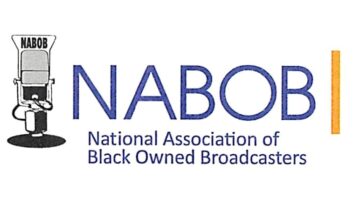You may recall that way back in the June 8, 2005 issue of RW, this column first used the term “podjacking” to refer to reports coming in about car radio interference from the low-power (“FCC Part 15”) FM transmitters used to feed portable devices into car audio systems via their FM tuners. Since then, tests commissioned by NAB, and subsequent independent tests conducted by NPR Labs, have confirmed and quantified the problem.
These tests found that there are numerous devices in violation – sometimes egregiously – of the legal output power limits and spectral occupancy for these devices (FCC Part 15 limits output power in the FM broadcast band to 250 µV/m at 3 meters from the antenna). The transmitters are packaged in units designed for either the home or the car, and in the latter case, the issue is complicated by the fact that the device itself may appear compliant, but a non-compliant condition can be caused by inappropriate installation methods in the vehicle. This typically happens when the “wired” type of transmitter’s output cable is (unintentionally or otherwise) coupled not only to the FM receiver’s antenna input, but also to the vehicle’s car radio antenna. This antenna’s gain can create an ERP from the device that extends well beyond the Part 15 limits, potentially wreaking havoc with other nearby vehicles’ FM reception as it passes by them.
So a welcome bit of news on this front was Apple’s recent announcement of arrangements with GM, Ford and Mazda for hardwired audio iPod interfaces, which will first appear as dealer-installed options in the 2007 model year. (BMW already offered them, and it’s assumed that these might appear as factory-installed options in many manufacturers’ vehicles for model-year 2009 and beyond). But these options will cost $150 or more – significantly higher than most of the Part 15 devices, so whether and when this development will have an impact remains questionable.
Of course, these new interfaces also will include power and in some cases control, not just audio interconnection, but these other features can also be attached to the handheld by other (less elegant, but cheaper and equally workable) means.
Furthermore, although the iPod is currently the most popular handheld, there are many other similar devices that could not take advantage of this interconnection if it were truly iPod-specific. In fact, the expected approach is likely to be an adapter cable to a standard plug-in module in the car, so it is assumed that a range of different adapter cables might be offered by dealers or third parties to accommodate a variety of units – similar to the many cell-phone charging cables using the cigarette-lighter outlet.
Meanwhile, CEA is developing a truly standardized interface for such vehicle interconnection, which might ultimately accommodate multi-channel audio, video, power and standard control features (volume, transport and simple navigation). Again, actual implementation is several years away, however, and at yet unspecified costs.
If they weren’t so popular …
Another coincidental study shows that most people would prefer this hard-wired approach to interfacing handhelds in the car, and their least favorite method of doing so is via the FM receiver (or cassette adapter). So why are the Part 15 devices becoming so popular in U.S. cars and homes? Answer: because there are so many radios.
Among all the audio devices in the consumer ecosystem, the one that combines the highest quality with the greatest quantity is the FM receiver. They are cheap, have low-power consumption and small footprints, exhibit reasonably high fidelity (enough for small-speaker systems, certainly), provide decent reception with small antennas, and work well enough for both fixed and mobile reception. FM is the lingua franca, common to almost every car and home audio system.
That’s the good news for broadcasters in all this; their platform is the most prevalent. But the news turns sour when that platform is also so susceptible to hijacking by another source, and the iPod (or a satellite radio tuner) is thereby given parity with – and can become a substitute for – the local radio station. Moreover, when new consumer products interfere with FM listening by others who don’t even own or want to own a Part 15 device, something is truly amiss.
An ironic sidebar here is that the one audio-device form factor where the FM tuner is not commonplace is in the portable device category itself. Apple makes a wired iPod peripheral that includes an FM tuner, along with a remote control, which, while it works well as a remote (and even has a cool FM tuning display on the video iPod screen w/RBDS station-ID data), it’s not such a great receiver – low sensitivity, so-so audio, and like any headphone-antenna portable radio, accentuated multipath effects. Very few other handhelds include FM receivers (including satellite radios), probably for these same reasons – even though in the same study cited earlier, consumers ranked it as one of the top additional features they wished their handheld had. Again, more bittersweet news for broadcasters: Users would like to have FM radios included on their handhelds, but today’s portable audio devices are used more often as FM transmitters than as receivers.
Another measure of the popularity of this approach is the availability of new features on Web sites like radio-locator.com. Click on the “Find unused frequencies on the FM dial” link on the site’s home page, enter your Zip code, and the site paints you a rough spectral picture of the FM band at your approximate location, along with a tabular list of good, better and best frequencies on which to set your Part 15 transmitter.
A further point to ponder is that the iPod and other similar devices present a new paradigm of non-removable audio content. The device may be portable but often the content isn’t – plus the devices generally have only headphone outputs, so some external device(s) must be interfaced if the user ever wants to hear the content resident (and possibly locked) on the device over loudspeakers. If this trend toward caged music grows, expect the growth of simple escape routes such as Part 15 devices to grow along with it.
Insult to injury
Maybe the hardest part for broadcasters to swallow is that satellite radio also uses this Part 15 route into the FM car receiver. Interestingly, because of this, the decency issue may finally motivate the FCC to get more proactively involved. It’s hard for the commission not to react strongly when repeated cases are cited of a nice clean public or religious broadcaster’s signal on the low end of the FM band (some Part 15 devices only retransmit in this spectral area) being “satjacked” by a blast of invective from a Sirius receiver retransmitting Howard Stern on the same frequency. So while Mom listened to “Morning Edition,” little Janie and Junior in the back seat were just introduced to some new vocabulary on their way to school – which they’ll be sure to share with all their friends once they get there.
Just what the next step will be is unclear. NAB has called for product recalls of the offending devices, but meanwhile, they continue to proliferate, and remain the most popular non-surgical method of interfacing outboard audio devices to the car. They are also useful in allowing “captive” audio to be easily heard on other audio systems around the house. Short of draconian efforts by regulators, it appears that the podjacking problem is likely to get worse before it gets better.







